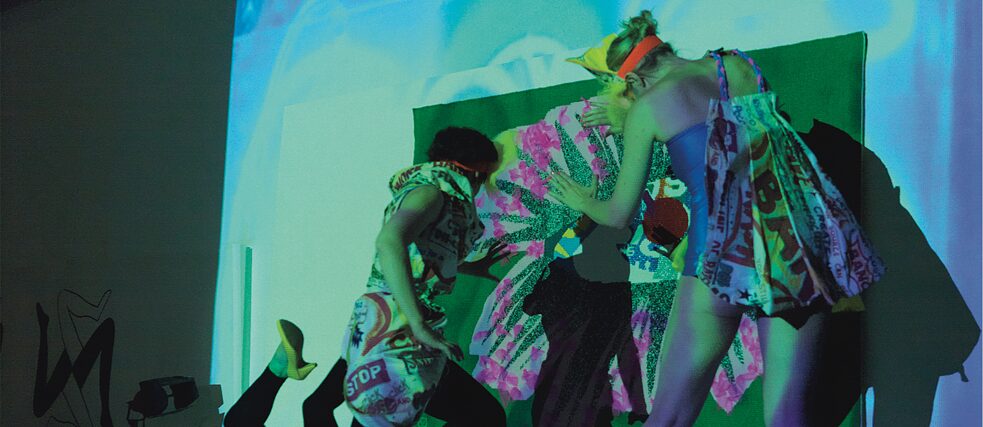Opening of the exhibition TECHNO WORLDS
“Authentic, vibrant and adaptable”

In the TECHNO WORLDS exhibition, international artists and musicians present their explorations of this worldwide well-known genre. The Goethe-Institut exhibition goes on a worldwide tour, starting at art quarter budapest.
By Mathilde Weh, Justin Hoffmann, Creamcake
At the interfaces between music, art, pop, media and technologies the TECHNO WORLDS exhibition follows an interdisciplinary and open approach. The titles refers to the multifaceted techno scenes, genres and subcultural political projects of the 1980s to the present day – at different times and places – and traces cultural and economic appropriation processes.
Techno and club culture have produced different epochs, styles and variants, and are continually reinventing themselves. Club culture develops its own worlds. It offers fleeting, semi-public social spaces in which being different is celebrated in the quest for self-determination and alternative realities. Club life thereby influences a new concept of youth and music culture distinguished by a dynamic, common experience that has always held an appeal for people from different areas of society.
Techno takes its inspiration from many different genres and from various regions of this world. Its birthplace, however, was the former car city of Detroit where in the mid 1980s African-American musicians were decisively involved in the development of techno music. It is inspired by many different sources, from electro and funk to European electronic pop by Kraftwerk and Georgio Moroder. The effects of technologization such as precarity and loss of security for the working classes could be directly felt in Detroit. Clubs represented a place of refuge where like-minded individuals could meet and form a community in which they were accepted and tolerated.
If the Black Box represents one point of reference for the spatial experience of techno, then the other is an exponential movement outwards. Numerous unoccupied spaces such as empty industrial buildings, meadows at the edges of towns, and inner-city streets in which demonstrations or parades were held were temporarily used for techno parties. Similarly to the reclaim-the-streets movement, the techno scene seized possession – dancing, letting off steam, searching for moments of happiness – of places that otherwise served car traffic. This appropriation of spaces also represented a criticism of the economic interests that characterise urban living. The political character at the beginning of techno parades was self-evident, even if the commercial aspect became ever more central.
During the 1990s, techno became more and more popular and the movement developed into a mass phenomenon. Today, techno and club culture are usually a byword for individualism, fun and personal fulfilment. Media corporations recognised the economic potential inherent in the phenomenon.
The worldwide touring exhibition TECHNO WORLDS does not aim to wallow in nostalgia but to depict the future-pointing visions of a lifestyle culture whose adaptability and unwieldiness have remained unique. Techno and rave culture, with their countless access points, remain energetic, authentic, vibrant and adaptable today only thanks to their perpetual practice and the retention of open spaces where experimentation can take place. For the exhibition, over 20 international artists, musicians and filmmakers who blur the boundaries between art and music in their works were selected. They include: Chicks On Speed, Tony Cokes, Zuzanna Czebatul, DeForrest Brown, Jr. & AbuQadim Haqq, Aleksandra Domanović, Rangoato Hlasane, Ryōji Ikeda, Maryam Jafri, Robert Lippok, M+M, Mamba Negra, Henrike Naumann & Bastian Hagedorn, The Otolith Group, Carsten Nicolai, Vinca Petersen, Daniel Pflumm, Sarah Schönfeld, Jeremy Shaw, Dominique White, Tobias Zielony, Kerstin Greiner and Lőrinc Borsos.
The stations in the TECHNO WORLDS exhibition thematise clubs but also rave culture as a community and a place for political campaigns and resistance. Other contributions explore the utopic importance of techno culture, club culture as a place of queer resistance or aesthetic principles of intertextuality in techno. Alongside video installations, songs, sculptures and paintings, documentary contributions will be shown. A catalogue of the same title will enable readers to explore techno and club culture through text articles and images.